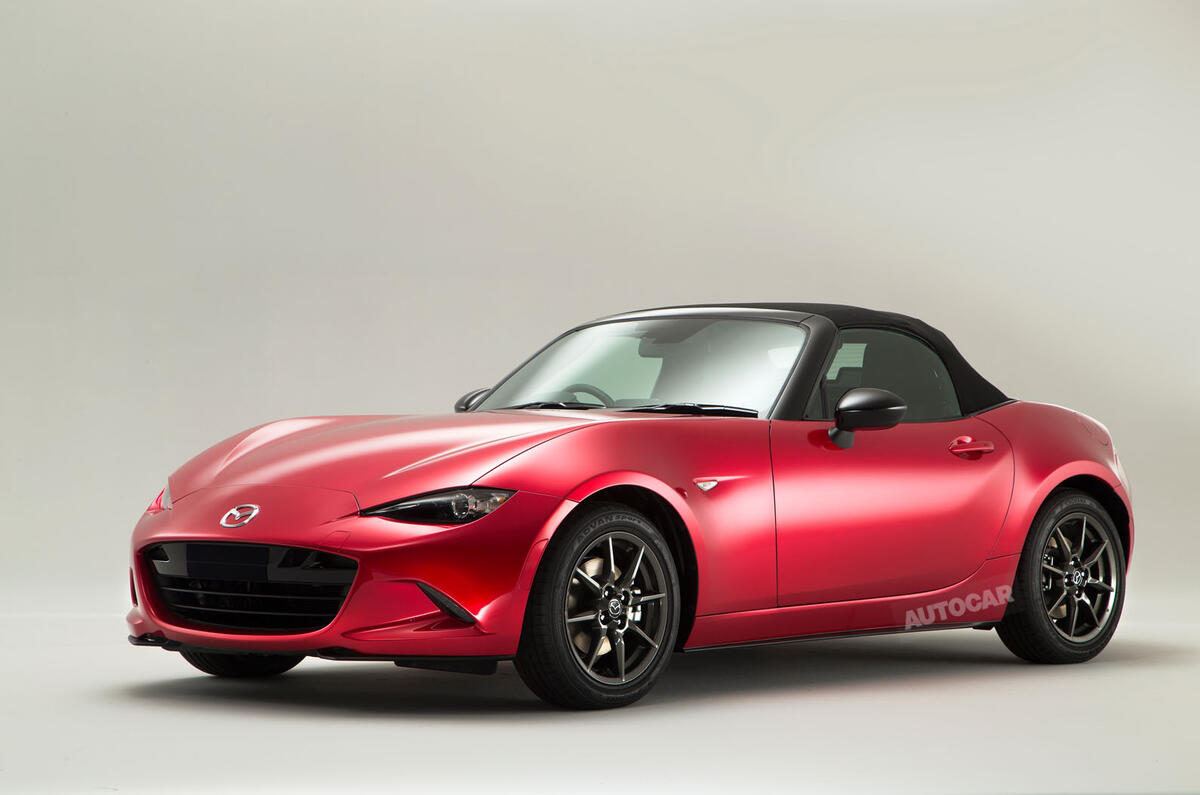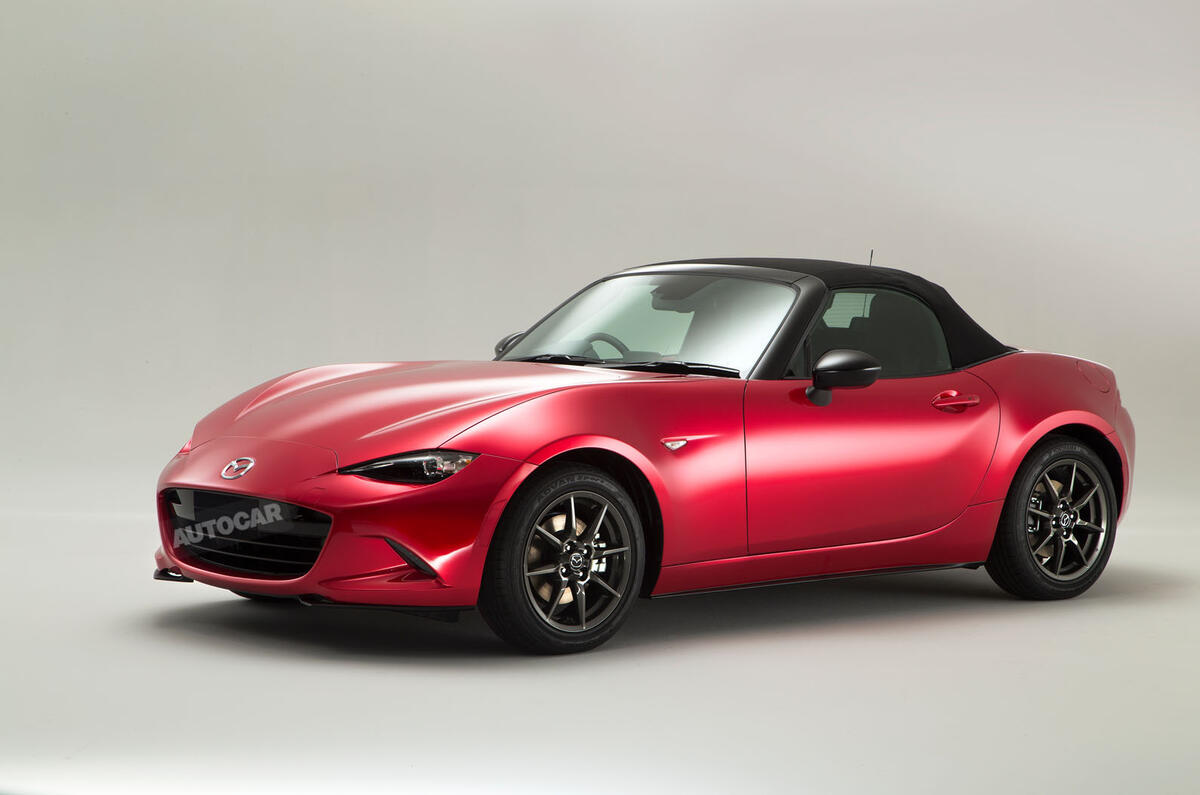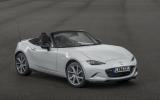Mazda has revealed a range-topping Mazda MX-5 Sport Recaro limited edition, with a production run of just 600 units.
Priced at £24,295, the MX-5 Sport Recaro sits at the top of the MX-5 range, carrying a £1000 premium over the Sport Nav model on which it is based.
The Sport Recaro MX-5 is so called because of its Recaro seats. It also offers 17in alloys and black aerodynamic bodywork and spoiler - all unique to the special edition. A numbered badge on the interior also signifies the limited-run MX-5. Further interior upgrades include alloy pedals and edition-specific floor mats.
The Mazda MX-5 costs from £18,495, while the Sport Recaro is priced at £24,295.
Mazda's fourth-generation roadster made its public debut at the Goodwood Festival of Speed this summer. It is new from the ground up and enters the market with a brand new rear-wheel drive chassis and two new petrol engines, all built using the company’s Skyactiv technology.
Mazda MX-5 program manager Nobuhiro Yamamoto said the new car had to conform to five crucial rules that now characterise the MX-5 – rear drive with a front-mid engine layout, 50/50 weight distribution, minimal “yaw inertia” (how quickly it changes direction), a low kerb weight and affordability.
There are five trim levels for the smaller-engined 1.5-litre model, and five for the 2.0-litre, including the limited-run Sport Recaro edition.
All models get six-speed manual gearboxes, air conditioning, LED headlights and alloy wheels. Stepping up to SE-L gets daytime running lights, climate control, cruise control, DAB radio, Bluetooth and a touch-screen infotainment system. Sport models get automatic lights, heated leather seats, keyless entry and a upgraded sound system. As the names suggest, SE-L Nav and Sport Nav models get satellite navigation for a £500 premium.
The 2.0-litre engine is only available on the SE-L and above. Opting for it adds a limited-slip differential, larger 17in wheels a strut-tower brace. Sport models also get upgraded Bilstein dampers.
Other options include a choice of seven colours, a tan leather option and blindspot monitoring on Sport Nav models.
Prices
1.5i SE £18,495
1.5i SE-L £19,245
1.5i SE-L Nav £19,845




































































Join the debate
Add your comment
Mazda
JAGUAR MX-5
-
It is not known why Mazda would persevere with the co-operative agreement with Alfa (FIAT), who no longer seem to know what to do with that arrangement.
-
As a replacement (or substitute) for the FIAT model, a Jaguar version of the MX-5, would provide a much needed “price leader” into the Jaguar model range, marque, franchise.
-
Just try to imagine the new MX5 with the new Jaguar “nose” (grill) on the front.
-
Should Jaguar want - or need - to be represented in the market segment within which the new MX-5 competes? Unequivocally, YES!
-
It will be at least another 2-3 generations before Jaguar has the (re-)established reputation, resources, to compete against the German opposition in the “quality” front-wheel-drive (FWD) “super-mini” segment, as price-leader to the rest of the range.
-
For the immediate future, an open sports car, is definitely more appropriate to the Jaguar company “profile” than a front-wheel-drive (FWD) “super-mini” segment, as price-leader to the rest of the range.
-
Does it matter that a Jaguar MX-5 may not contribute significantly to Jaguar’s profits? NO!
-
A Jaguar MX-5 will importantly increase the “foot-fall” and financial turnover of Jaguar’s dealers. A Jaguar MX-5 will deprive other marques of sales. A Jaguar MX-5 will provide an appropriate, successful, entry to the Jaguar range of more expensive (profitable) models.
-
FIAT, who - it does seem - do not (now) know what to do with the Alfa-Mazda deal, do already have amicable commercial relations with TATA, who own JLR (Jaguar Land Rover).
-
FIAT and TATA have co-operative commercial and manufacturing agreements in India. FIAT and TATA have connections in the UK through shared vehicle (purchase) financing schemes.
-
Until recently, Mazda did have Ford as a major shareholder. As once part of the Premier Automotive Group (PAG), Jaguar - with Volvo, Lincoln and Aston Martin - were also “owned” by Ford.
-
There are (of course) other historic direct links between Jaguar and Mazda. The Mazda RX-8 was used as a basis for the 2003 Jaguar R-D6 compact four-seat coupé prototype. It is understood the (penultimate, steel) XK and earlier X-Type, utilised rear light clusters from Mazda.
-
It can only be hoped that there is still sufficient goodwill, and “camaraderie”, in existence for all those who could, should, now be involved - to negotiate the “buy-out” of FIAT (Alfa) from the Mazda deal . . . to be replaced by Jaguar (TATA)!!
-
It is to be hoped that the ‘phone lines between Mazda and Jaguar, have been busy!!
New MX5